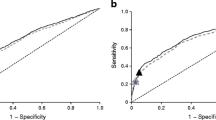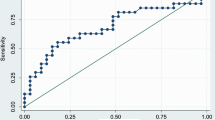Abstract
The purpose of this study was to compare fasting and post-prandial glucose concentrations measured in venous blood with continuous glucose monitoring (CGM)-derived values, with and without prior exercise, in insulin-resistant, normoglycemic women. Interstitial and venous glucose concentrations were assessed in ten sedentary, overweight/obese African-American women following a sedentary condition (75 min of rest) and following an exercise condition (75 min of brisk walking on a treadmill). Ninety minutes after rest or exercise, participants completed an oral glucose tolerance test (OGTT). In response to the OGTT, CGM-derived glucose area under the curves (AUC) were lower than venous values in the exercise condition (−25%, p = 0.03) but this difference was attenuated in the sedentary condition (−10%, p = 0.09). Additionally, CGM-derived absolute glucose values (mMol) were significantly lower compared to venous values during the sedentary (p = 0.007) and exercise conditions (p = 0.006). Overall, there was a moderately strong relationship between venous and CGM-derived glucose AUC (r 2 = 0.68) but the CGM-derived values were consistently lower in this study group. Although CGM provided more information regarding post-prandial glucose responses, these results suggest that CGM may not closely match venous glucose measurements in normoglycemic participants.



Similar content being viewed by others
References
Aussedat B, Dupire-Angel M et al (2000) Interstitial glucose concentration and glycemia: implications for continuous subcutaneous glucose monitoring. Am J Physiol Endocrinol Metab 278:E716–E728
Bolinder J, Ungerstedt U et al (1992) Microdialysis measurement of the absolute glucose concentration in subcutaneous adipose tissue allowing glucose monitoring in diabetic patients. Diabetologia 35:1177–1180
Braun B, Butterfield GE et al (1998) Women at altitude: changes in carbohydrate metabolism at 4,300-m elevation and across the menstrual cycle. J Appl Physiol 85:1966–1973
Braun B, Sharoff C et al (2004) Effects of insulin resistance on substrate utilization during exercise in overweight women. J Appl Physiol 97:991–997
Cartee GD, Young DA et al (1989) Prolonged increase in insulin-stimulated glucose transport in muscle after exercise. Am J Physiol 256:E494–E499
Cauza E, Hanusch-Enserer U et al (2005) Strength and endurance training lead to different post exercise glucose profiles in diabetic participants using a continuous subcutaneous glucose monitoring system. Eur J Clin Invest 35:745–751
Cheyne E, Kerr D (2002) Making ‘sense’ of diabetes: using a continuous glucose sensor in clinical practice. Diabetes Metab Res Rev 18:S43–S48
Chico A, Vidal-Rios P et al (2003) The continuous glucose monitoring system is useful for detecting unrecognized hypoglycemias in patients with type 1 and type 2 diabetes but is not better than frequent capillary glucose measurements for improving metabolic control. Diabetes Care 26:1153–1157
Claremont DJ, Sambrook IE et al (1986) Subcutaneous implantation of a ferrocene-mediated glucose sensor in pigs. Diabetologia 29:817–821
Diamond MP, Grainger DA et al (1993) Counter-regulatory response to hypoglycemia in the follicular and luteal phases of the menstrual cycle. Fertil Steril 60:988–993
Diseases, N. I. o. D. a. D. a. K. (2008) National Diabetes Statistics, 2007 fact sheet. Bethesda, MD, U.S. Department of Health and Human Services, National Institutes of Health
Gross TM, Bode BW et al (2000) Performance evaluation of the MiniMed continuous glucose monitoring system during patient home use. Diabetes Technol Ther 2:49–56
Hasson RE, Freedson PS et al (2006) Postexercise insulin action in African-American women. J Natl Med Assoc 98:1832–1839
Kost GJ, Vu HT et al (1998) Multicenter study of oxygen-sensitive handheld glucose point-of-care testing in critical care/hospital/ambulatory patients in the United States and Canada. Crit Care Med 26:581–590
Kulcu E, Tamada JA et al (2003) Physiological differences between interstitial glucose and blood glucose measured in human subjects. Diabetes Care 26:2405–2409
Lagarde WH, Barrows FP et al (2006) Continuous subcutaneous glucose monitoring in children with type 1 diabetes mellitus: a single-blind, randomized, controlled trial. Pediatr Diabetes 7(3):159–164
Mastrototaro J (2000) The MiniMed continuous glucose monitoring system. Diabetes Technol Ther 2:S13–S18
Matsuda M, DeFronzo RA (1999) Insulin sensitivity indices obtained from oral glucose tolerance testing: comparison with the euglycemic insulin clamp. Diabetes Care 22:1462–1470
Monsod TP, Flanagan DE et al (2002) Do sensor glucose levels accurately predict plasma glucose concentrations during hypoglycemia and hyperinsulinemia? Diabetes Care 25:889–893
Pfeiffer EF, Meyerhoff C et al (1993) On line continuous monitoring of subcutaneous tissue glucose is feasible by combining portable glucosensor with microdialysis. Horm Metab Res 25:121–124
Pickup JC, Shaw GW et al (1989) In vivo molecular sensing in diabetes mellitus: an implantable glucose sensor with direct electron transfer. Diabetologia 32:213–217
Rebrin K, Steil GM et al (1999) Subcutaneous glucose predicts plasma glucose independent of insulin: implications for continuous monitoring. Am J Physiol 277:E561–E571
Schmidt FJ, Sluiter WJ et al (1993) Glucose concentration in subcutaneous extracellular space. Diabetes Care 16:695–700
Stolk RP, Orchard TJ et al (1995) Why use the oral glucose tolerance test? Diabetes Care 18:1045–1049
Tanenberg R, Bode B et al (2004) Use of the Continuous Glucose Monitoring System to guide therapy in patients with insulin-treated diabetes: a randomized controlled trial. Mayo Clin Proc 79:1521–1526
Thome-Duret V, Reach G et al (1996) Use of a subcutaneous glucose sensor to detect decreases in glucose concentration prior to observation in blood. Anal Chem 68:3822–3826
Toth EL, Suthijumroon A et al (1987) Insulin action does not change during the menstrual cycle in normal women. J Clin Endocrinol Metab 64:74–80
Yates K, Hasnat Milton A et al (2006) Continuous glucose monitoring-guided insulin adjustment in children and adolescents on near-physiological insulin regimens: a randomized controlled trial. Diabetes Care 29:1512–1517
Acknowledgments
The authors would like to thank the research participants for enthusiasm and their commitment of time and effort. We also acknowledge helpful assistance from Priscilla Clarkson, Ph.D., Stuart Chipkin, M.D., David Pober, Ph.D., Carrie Sharoff, Ph.D., Todd Hagobian, Ph.D., Kaila Holtz, M.S. and Cheryl Howe, Ph.D.
Author information
Authors and Affiliations
Corresponding author
Additional information
Communicated by Susan Ward.
Rights and permissions
About this article
Cite this article
Hasson, R.E., Freedson, P.S. & Braun, B. Use of continuous glucose monitoring in normoglycemic, insulin-resistant women. Eur J Appl Physiol 108, 1181–1187 (2010). https://doi.org/10.1007/s00421-009-1325-x
Accepted:
Published:
Issue Date:
DOI: https://doi.org/10.1007/s00421-009-1325-x




